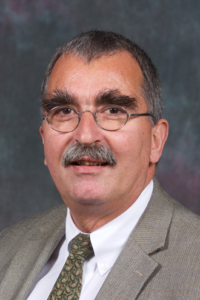
Internal Medicine Department Head
You may not recall, the blurb I wrote two years ago for our first newsletter. As today’s, it was entitled “Fortiter in re, suaviter in modo”, freely translated: “be mindful of your goals, but take the high road in pursuing them”. The phrase is attributed to Claudio Acquaviva, a Jesuit priest and Superior who lived in Italy from 1543 to 1615. I often think of this as a motto and strongly believe it has not lost a bit of its actuality in the 400 years since it has been written down for the first time. In fact, presently, with all the changes going on simultaneously and at several levels in our health care system, it may be more pertinent than ever.
Taking the high road in pursuing one’s goals is a matter of style. According to Miriam Webster’s dictionary, style means “a distinctive manner or custom of behaving or conducting oneself”. The high road in that context means, in my opinion, to behave and conduct oneself in a way that is accepted by one’s opponents despite them disagreeing on the content. The basis of such conduct and behavior is respect, respect of our opponents as individuals and human beings. Style then boils down to how we treat those staff and colleagues with whom we daily (have to) deal in pursuing our jobs and providing our services, without judging them as persons along the line of good and bad. As professionals, we may disagree, but we argue on the content and do not target the person. And if hard comes to hard, we try to create a situation that allows our opponents to pull their head out of the sling without losing their face.
Of course, this respect also pertains to our dealings with patients, but that is a slightly different matter, and maybe a topic for a separate blog.
Taking the high road in pursuing one’s goals also means being patient and composed. I once hiked for two weeks on a long distance trek in the Swiss mountains. Initially, it depressed me to see each morning the day’s goal shimmering blueish far on the horizon, and having in front of my eyes that I was seemingly not progressing during the first hours of walking, the load becoming heavy, the legs getting tired, and the feet starting to feel sore. After a few days, I had realized, and become confident, that I would eventually make it and reach the day’s goal. This experience taught me to accept that a journey is usually composed of a sequence of numerous baby steps, each of those baby steps bringing us a bit closer to our final destination. We will reach our goal eventually – as long as we pursue our course patiently and composed.
I know that staying respectful, patient and composed is not an easy task in the hectic of our daily schedules – and with all the challenges the ongoing changes bring our way. Despite trying hard, at times we all fail. However, this must not hinder us being ever conscious of our own style. Witnessing, or worse, being subjected to non-respectful and impatient styles by others, should never discourage us from choosing that high road Claudio Acquaviva marked out for us 400 years ago.

 Have you ever looked from very closely at an oil painting, perhaps from a few inches away? You will see, colours, lines, the texture of a brush stroke, but will have difficulties identifying the object(s) depicted, not to speak of appreciating the entire composition. You have to step back, create some distance, to stand not too close, but not too far away either; you need to stand in just the right distance to appreciate the art-work in its entirety.
Have you ever looked from very closely at an oil painting, perhaps from a few inches away? You will see, colours, lines, the texture of a brush stroke, but will have difficulties identifying the object(s) depicted, not to speak of appreciating the entire composition. You have to step back, create some distance, to stand not too close, but not too far away either; you need to stand in just the right distance to appreciate the art-work in its entirety. Dr. Emily Rimmer was awarded 1st Prize for the Best Masters in the Bold Idea Student Graduate student competition in the Department of Community Health Sciences. The title of her thesis is White Blood Cell Count Trajectory and Mortality in Septic Shock: A Retrospective Cohort Study
Dr. Emily Rimmer was awarded 1st Prize for the Best Masters in the Bold Idea Student Graduate student competition in the Department of Community Health Sciences. The title of her thesis is White Blood Cell Count Trajectory and Mortality in Septic Shock: A Retrospective Cohort Study
